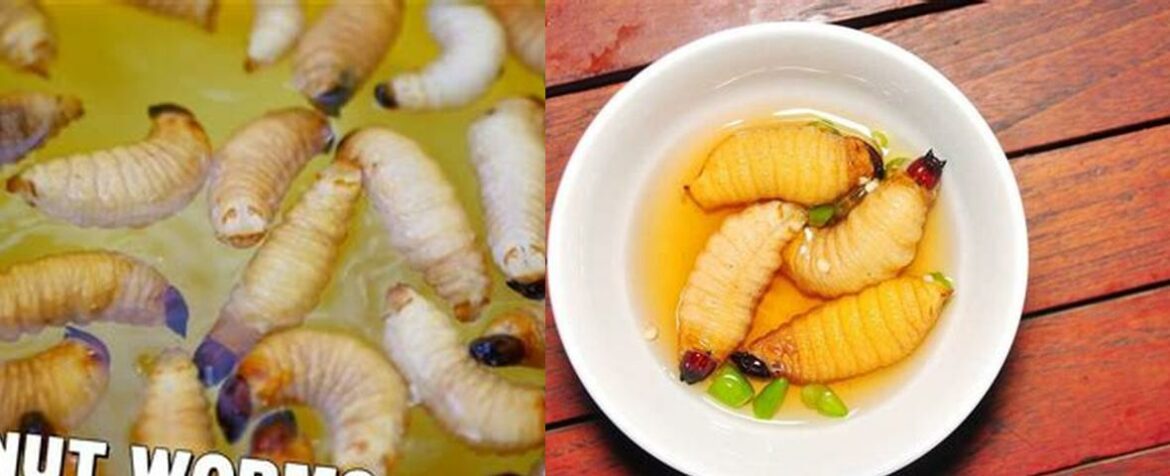Coconut Worms: A Culinary Adventure into Vietnam’s Unique Delicacy
Have you ever wondered what adventurous eaters around the world indulge in? Brace yourself for a culinary experience like no other as we delve into the intriguing world of coconut worms. Yes, you read that right – worms! But before you squirm in your seat, let’s uncover the answer to the burning question on everyone’s mind: What do coconut worms taste like? Prepare to be amazed as we embark on a journey filled with surprising flavors, unexpected textures, and a taste that will leave you wanting more. So, put on your adventurous hat and join us as we explore the delectable world of coconut worms.
Coconut Worms: A Culinary Adventure into Vietnam’s Unique Delicacy
In the culinary tapestry of Vietnam, coconut worms stand out as a delicacy that has captivated taste buds for generations. These plump, creamy-white larvae, nestled within the heart of coconut trees, offer a unique gastronomic experience that blends sweet, nutty flavors with a distinctively chewy texture. Delve into the world of coconut worms, exploring their taste, culinary versatility, nutritional value, and the cultural significance they hold in Vietnam.
Sweetness and Nuttiness: A Taste of Coconut Delights
Coconut worms possess a remarkable flavor profile that sets them apart from other edible insects. Their meat boasts a delicate sweetness, reminiscent of coconut flakes or shredded coconut, with subtle nutty undertones. This unique flavor combination stems from their diet, primarily consisting of coconut flesh and sap. When cooked properly, coconut worms exhibit a slightly crunchy exterior and a tender, chewy interior, creating a delightful textural contrast.
Culinary Versatility: From Raw to Exquisitely Cooked
The culinary possibilities with coconut worms are as diverse as their flavor. In Vietnam, where they are considered a delicacy, coconut worms are often eaten raw, dipped in fish sauce for an extra burst of umami. This traditional method of consumption allows for the full appreciation of their natural sweetness and texture. However, coconut worms truly shine when cooked, revealing a range of culinary applications that tantalize the taste buds.
Pan-frying, stir-frying, baking, boiling, and steaming are just a few techniques used to prepare coconut worms. Each cooking method imparts a unique flavor and texture to these versatile creatures. Pan-frying lends a crispy golden-brown exterior, while stir-frying infuses them with aromatic spices and vegetables. Baking produces a tender and succulent texture, while boiling or steaming retains their delicate sweetness.
A Nutritious Treat: Unveiling the Health Benefits of Coconut Worms
Beyond their culinary appeal, coconut worms offer an impressive nutritional profile. They are an excellent source of iron, calcium, magnesium, dietary fiber, B vitamins, and essential fatty acids. This nutritional composition makes them a valuable addition to a balanced diet, providing essential nutrients for overall health and well-being.
Iron plays a crucial role in red blood cell production and oxygen transport, while calcium promotes strong bones and teeth. Magnesium supports muscle function and nerve transmission, and dietary fiber aids in digestion and helps regulate blood sugar levels. B vitamins are essential for energy production, cell metabolism, and nervous system function. Additionally, coconut worms are low in fat and calories, making them a guilt-free indulgence.
Cultural Significance: A Delicacy Rooted in Vietnamese Tradition
In Vietnam, coconut worms hold a special place in the culinary culture. They are considered a delicacy, often served at special occasions and gatherings. Their unique flavor and texture have earned them a loyal following among locals and adventurous tourists alike. Coconut worms are commonly found in street food stalls, where they are prepared fresh and served with various dipping sauces and accompaniments.
The popularity of coconut worms in Vietnam can be attributed to their historical significance. In times of scarcity, coconut worms served as a valuable source of protein and nutrients for the Vietnamese people. Today, they remain a cherished culinary tradition, passed down from generation to generation.
Conclusion: Embracing the Extraordinary Taste of Coconut Worms
Coconut worms, with their distinctive flavor, culinary versatility, and nutritional value, offer a unique and unforgettable gastronomic experience. Whether you choose to savor them raw, grilled, or deep-fried, these edible larvae promise to delight your taste buds and expand your culinary horizons. As you embark on this culinary adventure, remember that coconut worms are not only a delicacy but also a symbol of Vietnamese culinary heritage and resilience.
FAQ about What Do Coconut Worms Taste Like
Q: What do coconut worms taste like?
A: Coconut worms have a delicate sweetness, reminiscent of coconut flakes or shredded coconut, with subtle nutty undertones.
Q: What contributes to the unique flavor of coconut worms?
A: The unique flavor of coconut worms comes from their diet, primarily consisting of coconut flesh and sap.
Q: How is the texture of coconut worms when cooked?
A: When cooked properly, coconut worms exhibit a slightly crunchy exterior and a tender, chewy interior, creating a delightful textural contrast.
Q: How are coconut worms traditionally consumed in Vietnam?
A: In Vietnam, coconut worms are often eaten raw, dipped in fish sauce for an extra burst of umami, allowing for the full appreciation of their natural sweetness and texture.
Q: What are the culinary possibilities with coconut worms?
A: Coconut worms can be cooked in various ways, such as grilling or deep-frying, and can be used in a range of culinary applications to tantalize the taste buds.
Q: What is the cultural significance of coconut worms in Vietnam?
A: Coconut worms are not only a delicacy but also a symbol of Vietnamese culinary heritage and resilience, holding cultural significance in Vietnam.


